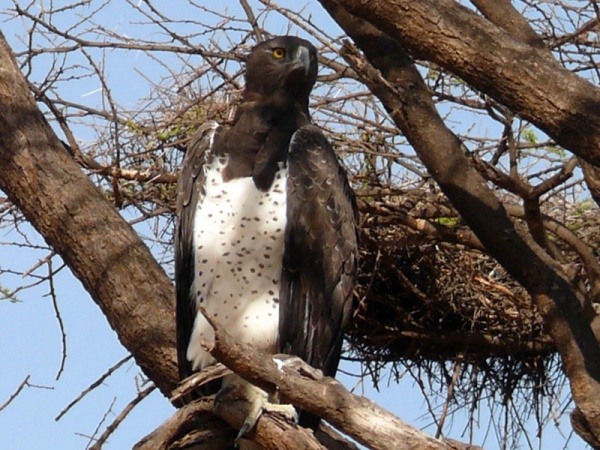Facts About Martial eagle
The martial eagle, a majestic and formidable bird of prey, inhabits sub-Saharan Africa. It is the sole member of its genus, Polemaetus, and belongs to the booted eagle subfamily, distinguished by feathers that extend down their legs. These eagles are opportunistic hunters, preying on mammals, birds, and reptiles from great heights.
Unfortunately, martial eagles are facing significant threats. They have experienced notable population declines due to human activities such as hunting and habitat destruction. Consequently, the International Union for Conservation of Nature (IUCN) has classified them as Vulnerable.
Martial eagles inhabit various regions across sub-Saharan Africa, spanning approximately 26,000 square kilometers. They are most frequently found in southern and eastern Africa, particularly in countries like South Africa and Zimbabwe, but are scarce in West Africa. These eagles favor wooded savannas and open areas, avoiding dense forests and arid deserts.
Belonging to the Accipitridae family, one of the most diverse groups of diurnal raptors, martial eagles are genetically distinct from other booted eagles, having diverged millions of years ago. There are no recognized subspecies, and they exhibit negligible genetic variation across their range.
Martial eagles are impressive in size, with a wingspan ranging from 188 to 227 cm (about 6 to 7.5 feet) and a body length of 78 to 96 cm (about 2.5 to 3 feet). Females, significantly larger than males, demonstrate pronounced sexual dimorphism. Adults display dark brown feathers on their upper parts and white underparts adorned with blackish-brown spots. Juveniles are lighter and gradually attain adult plumage by their seventh year. They possess exceptional eyesight for spotting prey from afar and powerful talons for capturing and killing large game.
Typically solitary, martial eagles prefer undisturbed areas. They spend considerable time soaring and hunting from the sky. Their diet is diverse, consisting of small rodents, large ungulates, monitor lizards, venomous snakes, and even other predators.
Martial eagles nest in large trees, constructing nests from sticks and lining them with green leaves. They generally lay one egg biennially, with the female primarily responsible for incubation and initial chick care. The young fledge around 96 to 109 days post-hatching but may remain dependent on their parents for several months.
Conservation is vital for martial eagles as they face numerous threats, including direct killing by humans, habitat loss, and collisions with power lines. Education and the establishment of more protected areas are essential for their survival. Despite their natural rarity, the decline in martial eagle populations is alarming, necessitating urgent conservation efforts to secure their future.

 Tanzania
Tanzania